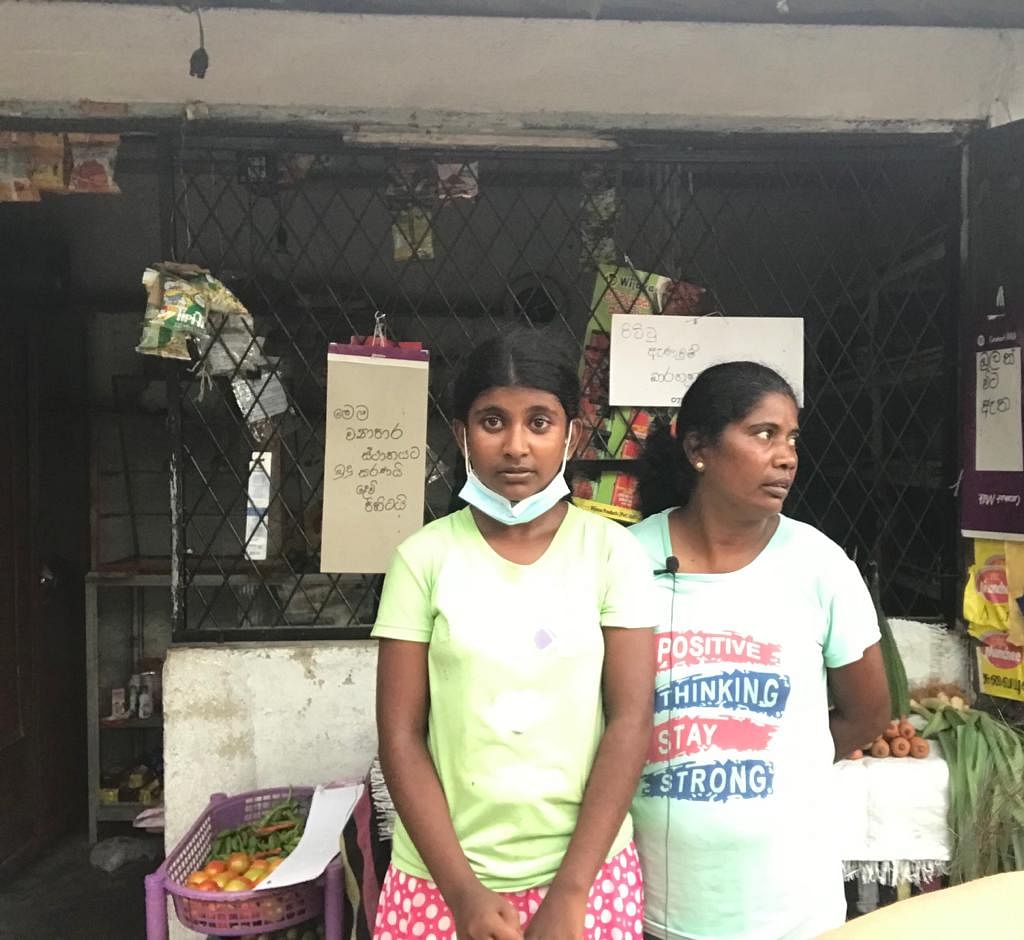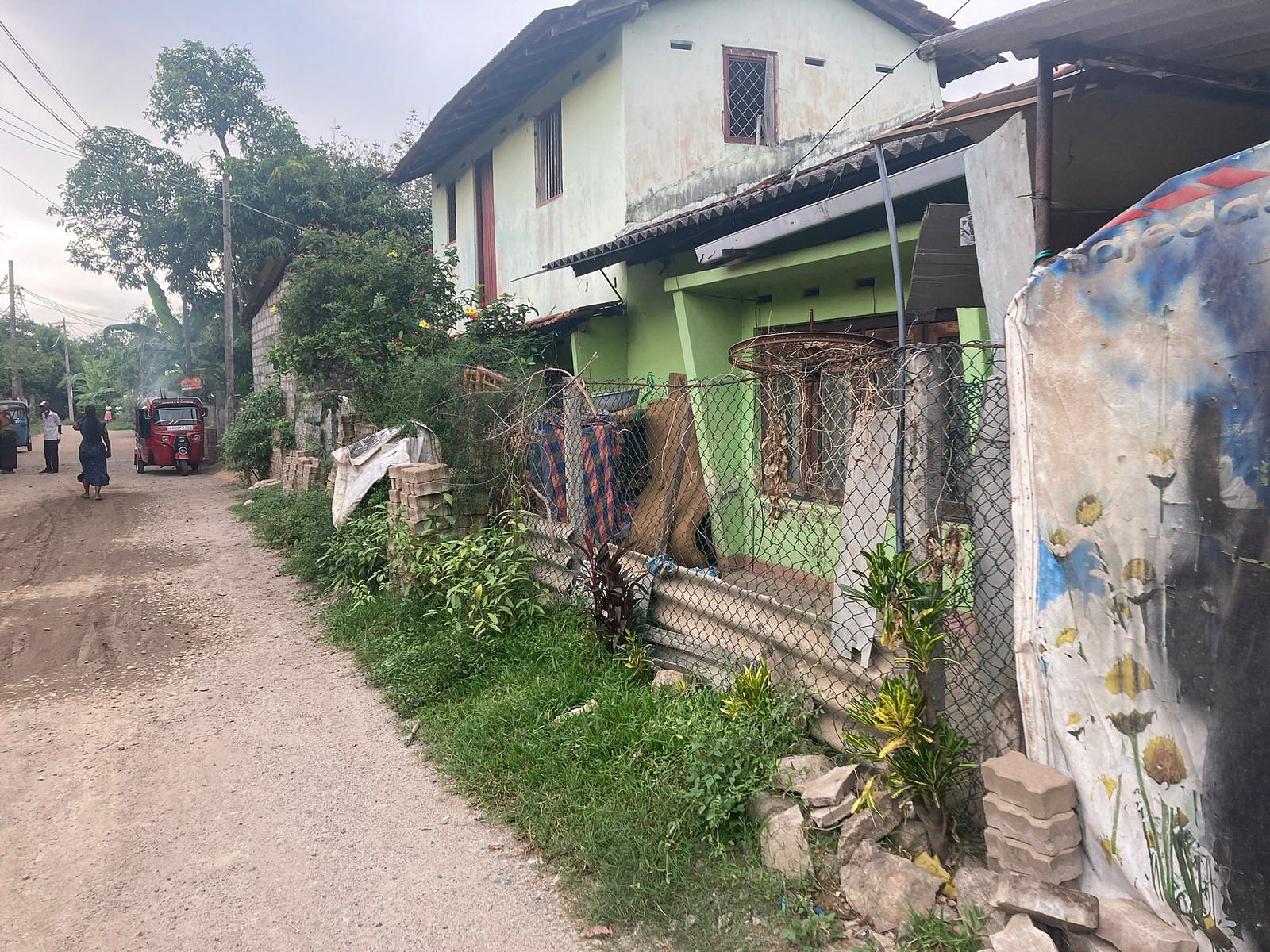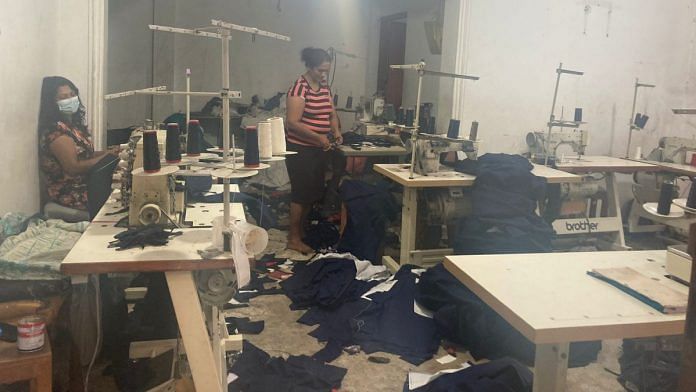Colombo: Nadeera and her 13-year-old daughter Shanali look up as a customer walks past their store. Do they have coconut milk in stock? No. There’s no bread or eggs either. They barely have anything in stock.
Living in a rented house in Colombo’s Orugodawatta, the mother and daughter run a small shop that sells products of everyday needs. But in today’s Sri Lanka, these essentials are hard to come by.
Sri Lanka is experiencing its worst economic crisis in 70 years, with soaring prices and shortages of food, fuel, medicines, and paper hurting the masses. There are daily power cuts, according to a timetable that is regularly revised — the residents of Orugodawatta in Sri Lanka’s Western Province have stopped keeping track.
The neighbourhood is home to a mixture of low-income families from different communities — Sinhala Buddhist, Sinhala Christian, Tamil, and Muslim. Urban poverty might look very different in Sri Lanka compared to India, with more organised housing and without overcrowding, but the reality inside homes is different.
While the island country has high literacy and life expectancy rates, the World Bank estimates that Sri Lanka’s low poverty counts are outdated, and that successive crises — like the Easter Sunday bombings in 2019 and the Covid pandemic in 2020 — have pushed people out of the middle-class and further into poverty.
While the official statistics say around 4 per cent of Sri Lanka’s population are in poverty, the World Bank estimates the number is actually closer to 11.7 per cent.
Nadeera’s family is one such example: she used to have a stable job, but had to pawn her family assets to stay afloat, including the jewelery she was saving for her daughter’s wedding. “She is in ninth grade. We can’t give things that we gave her earlier,” Nadeera says.
Their little store is forced to close in the evening. She can’t afford oil to light kerosene lamps to keep her shop open. Her husband, who drives a three-wheeler for hire, hasn’t been able to work regularly because of the fuel shortage.
“We don’t have anything to sell,” Nadeera says, pointing towards the empty shelves in her store. “I could only make five chapatis this morning to sell to workers, but nobody bought them. So we ate it ourselves.”

Also read: Sri Lanka economic crisis shows how populism and hasty decisions can make a country crash
Surviving on each other’s generosity
Protests have broken out across Sri Lanka, mostly spearheaded by the youth. Urban cities like Colombo and Kandy are also seeing huge numbers of middle-class protesters on the streets, shouting slogans like “Go home, Gota!” against President Gotabaya Rajapaksa.
But the shortages have hit low-income and daily wage households the hardest. Queuing at ration shops just to manage a day’s essential means losing a day’s salary. That is the choice for female daily wage workers: either go to work and have nothing at home to eat, or queue for essentials and lose a day’s earning. Often, the choice is made for them when the power is cut. Because then, there is no work to go to.
At one tailor shop, where five women work to create men’s clothing, the electricity has just come back on. The women — Shalani, Nishanti, Rangi, Nayana and Surekha — gleefully said their boss managed to connect to a different line of electricity, one that belongs to the adjacent landlord’s house. This means that they’ll be able to take home their daily salary – around 150 Indian rupees.
It’s barely enough to cover anything, but at least it’s something, they say. Fortunately, their boss allows them an hour’s break in the afternoon to queue for groceries in the scorching heat. If they don’t find the time, they would have to spend more at private grocery stores instead of ration shops.
The women, all of whom are mothers, complain that they can’t afford to cook with chicken, eggs, or most seafood. At most, their meals consist of some rice, one vegetable preparation, and dry fish. They largely survive on whatever ration they can get hold of. One egg costs around Rs 10, and milk powder costs around Rs 500.
“The price of everything is going up,” says Surekha, who has just returned from an unsuccessful trip to buy milk powder — it wasn’t available.
“Except our salaries.”
Also read: Instead of trying to beat China in Sri Lanka, New Delhi needs to change the game
Generator for power cut, what about fuel?
One street away, Priyantha is preparing for the next power cut.
“The situation here is very sad,” he said. “I have three children and a wife, and I couldn’t do any work this month. We can’t live.”
He runs a welding shop in Orugodawatta, and is frustrated that he can’t commit to work due to the uncertainty of the economic crisis. He doesn’t know how long the electricity will be gone during the day, and hasn’t been able to give quotations to any of his customers because he’s not sure he’ll be able to do the work. When he does give a quotation, it has to be hourly.
“We have power cuts every day, it’s very difficult. I want to hire an assistant, but I can’t afford it. All my materials are now double the price too,” Priyantha said.

Pointing towards a metal part, he said it cost Rs 500. “That’s today’s price. It can change tomorrow, or in a few days.”
Opposite Priyantha’s welding store, carpenter Vijay and his colleagues have decided to rent a generator to avoid the long power cuts. They only got the generator the previous day: it costs them about Rs 400 per day in rent, and each litre of fuel runs the generator for two hours.
“Earlier we worked for 8 hours a day, now we are only able to work for 5-6 hours,” Vijay said. “Hopefully the generator will help, but getting the fuel is difficult.”
Also read: Sri Lanka slipped by pursuing Chinese prosperity dream. It’s in India’s interest to help it
Waiting for the next crisis
All the people ThePrint spoke to are still recovering from the aftermath of successive crises.
The Easter Sunday bombings in April 2019 devastated the economy, which has been growing only about 3 per cent. And then the pandemic hit: Nadeera used to work in a catering business, but lost her job due to Covid. Priyantha had to lay workers off at his welding shop.
Now, the residents of Colombo are gearing up for any new crisis. One such concern is the upcoming monsoon season in Sri Lanka. Orugodawatta is right by the Kelani River, which is prone to flooding.
Serika*, who is 78, is especially anxious because her home was destroyed in the 2016 floods, and she’s worried it might happen again. She voted for Gotabaya Rajapaksa thinking he would be different. She doesn’t understand how this crisis happened — all she knows is that she doesn’t want things to get worse.
Back at the tailor shop, the women are resigned to the reality of the situation. “We don’t have anything to give our children,” Nishanti said. “We don’t have rice. We don’t have milk. We can’t do anything but wait for things to get better.”
“Go home, Gota,” she says with a shrug.
With inputs from Harshana Thushara Silva in Colombo.
This is part one of the three-part series ‘Paradise Lost‘ by Vandana Menon on the impact of Sri Lanka’s economic crisis on citizens.
(Edited by Prashant)



